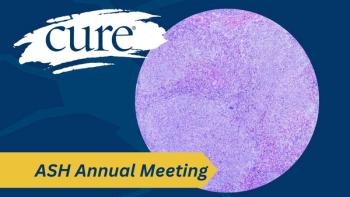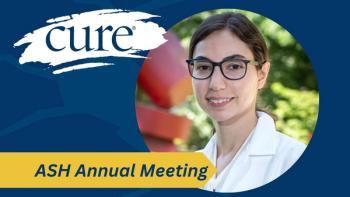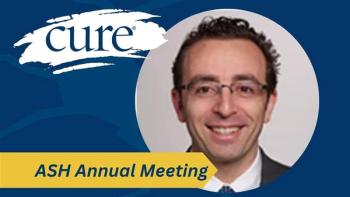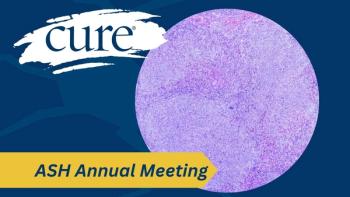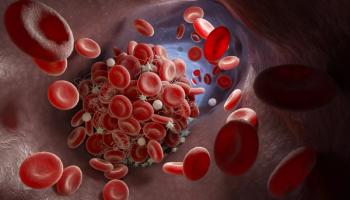
- Hematology Special Issue
- Volume 1
- Issue 1
When Less Is More: Paring Down Treatment for Hodgkin Lymphoma May Reduce the Risk of Long-Term Side Effects
Paring down treatment for Hodgkin lymphoma may reduce the risk of long-term side effects. Minimizing without hurting cure rates is the challenge.
Diagnosed with Hodgkin lymphoma in 2013, ERICA CAMPBELL avoided some treatments that have been associated with long-term side effects: radiation and bleomycin chemotherapy.PHOTO BY BRITTNEY NESTLE
Erica Campbell was 27 when she was diagnosed with Hodgkin lymphoma in early spring of 2013, and her treatment took her on quite a roller coaster ride.
Initially, the Maryland resident was told the cough that had irritated her since late fall had resulted from enlarged lymph nodes. By March, her red blood cell levels were so low that she needed a blood transfusion. That was around the time she underwent a biopsy of a lymph node in her neck, which confirmed cancer. After several more transfusions to boost her plunging platelet count, a CT scan brought bad news — the cancer had spread throughout her chest, lower abdominal area and, of course, into her bone marrow. It was stage 4.
More treatment ensued, a combination chemotherapy regimen. Finally, in June, despite complications — the bacterial infection MRSA in her leg and lower abdomen, shingles, a blood clot in her arm and, eventually, the sluggishness and nausea that characterizes the chemotherapy experience — she no longer had evidence of cancer on her PET scan.
Campbell fell into a peak age range for the disease. Relatively rare, with just over 9,000 new cases a year in the United States, Hodgkin lymphoma is most common among young adults between ages 15 and 40, particularly those in their 20s, and there is another age cluster among people over 55.
Luckily, Campbell had good odds of survival: Hodgkin lymphoma has one of the highest cure rates of any cancer. Eighty percent of all patients survive at least 10 years and usually much longer, though it varies by stage. At five years, 90 percent of all stage 1 and 2 patients, 80 percent of stage 3 patients and 65 percent of stage 4 patients are still alive.
That survival rate has risen significantly over the past few decades due to refinements in treatment. As a result of those advances, today’s patients also enjoy another benefit — one that, unfortunately, came at a price for those who were treated earlier: an understanding by doctors and researchers of the long-term negative health effects that can arise from intensive treatment of Hodgkin lymphoma, and efforts to tweak therapy approaches in order to minimize those late effects.
For Campbell, chemotherapy alone was sufficient to rid her body of cancer. Had she been treated a few decades ago, she likely would have started with combination chemotherapy and wide-ranging radiation treatment, before oncologists knew the long-term damage such therapy could cause.
“I probably didn’t ask a lot of questions at the time about how I would feel a year from now or two years from now,” says Campbell, who is concerned about developing depression and remains vigilant for those symptoms. But she knows she is fortunate.
“A large percentage of people have those (late) side effects and are feeling stuck,” she says. That’s partly why she became an ambassador with the Lymphoma Research Foundation and the Leukemia and Lymphoma Society, to help others get through the experience and its after-effects.
EARLY SUCCESSES — WITH COSTLY SIDE EFFECTS
Hodgkin lymphoma was one of the earliest cancers to be cured, shortly after radiation therapy was developed nearly a century ago, explains Monika Metzger, a pediatric leukemia/lymphoma oncologist at St. Jude Children’s Research Hospital.
“Patients would receive extended field radiotherapy, with total or subtotal nodal irradiation, that took care of the Hodgkin lymphoma, but it led to horrible side effects, particularly in children,” such as deformation from stunted bone growth, she says.
Chemotherapy starting with nitrogen mustards came on the scene in the 1940s, and survival rates increased in the 1960s with the combination therapies MOPP (nitrogen mustard [mechlorethamine] with vincristine, Matulane [procarbazine] and the steroid prednisone) and COPP (subbing cyclophosphamide for its relative, mechlorethamine), increasing cure rates to 70 or 80 percent but with a high risk of secondary leukemias due to chemotherapy or, more generally, secondary cancers associated with radiation, Metzger says.
With chemotherapy the new standard of care, those regimens, in the late 1970s and 1980s, gave way to ABVD, made up of doxorubicin, bleomycin, vinblastine and dacarbazine. The Stanford V regime, a compacted multi-agent, dose-intensive chemotherapy, was introduced in the late 1980s as a way to reduce the cumulative doses of chemotherapy while maintaining the intensity of dose and schedule, and therefore reducing the risk of long-term effects. It involved rotating seven different drugs over eight to 12 weeks: mechlorethamine, doxorubicin, vinblastine, vincristine, bleomycin, etoposide and prednisone. In the early 1990s, BEACOPP (bleomycin, etoposide, doxorubicin, cyclophosphamide, vincristine, procarbazine and prednisone) emerged from swapping out a few drugs from the combination COPP/ABVD regimen in efforts to increase its effectiveness.
While most patients were cured with therapy, those who relapsed faced worse outcomes, with a variety of “salvage” regimens used. The advent of high-dose chemotherapy, which must be followed by bone marrow or stem cell transplant, significantly improved the cure rate of refractory or relapsed Hodgkin lymphoma. It was 10 years after the first bone marrow transplant, which occurred in 1975, that these transplants became another viable option for curing lymphoma. Today, Hodgkin lymphoma is typically treated first with chemotherapy, then with radiation and finally, if the cancer recurs or does not respond to initial therapy, with stem cell transplant.
The most recent findings on late effects, published in the New England Journal of Medicine in December 2015, assessed nearly 4,000 Dutch survivors who were diagnosed between 1965 and 2000. Just over a quarter had received radiation alone, 12 percent had received chemotherapy alone, and the remaining 61 percent had been treated with both. At 40 years after the initiation of treatment, approximately half the patients in the study had been diagnosed with a second cancer, compared with a cumulative cancer risk of 19 percent for people in the same age group in the general population. There was not much change in the risk for second cancers over the study period, even among those treated most recently, between 1989 and 2000, the authors wrote.
There was good news in the study, however: When looked at in isolation, the risk of secondary leukemia decreased among those treated in the period from 1989 to 2000 who survived at least five years. The authors attributed this improvement to “the declining use of alkylating agent—based chemotherapy;” nitrogen mustard and dacarbazine are examples of alkylating agents, according to the American Cancer Society.
The investigators were surprised not to find any significant drop in breast cancer rates overall among those treated between 1989 and 2000 compared with patients treated during earlier periods. Still, they did find that certain treatments for Hodgkin lymphoma — specifically, smaller radiation fields — were associated with lower rates of secondary breast cancer among subsets of study participants.
In fact, the radiation fields used to treat Hodgkin lymphoma have gradually shrunk over the years. Involved site radiation therapy (ISRT) or involved node radiation therapy (INRT), each of which targets only, or primarily, the lymph nodes with disease, have been replacing involved field radiation therapy (IFRT), which covers larger treatment areas and exposes nearby organs. In the NEJM study, women whose radiation didn’t include the area under the arms had a 63 percent lower risk of breast cancer than those who received mantle field radiation, covering the lymph node areas in the neck, chest and under the arms. Those whose chemotherapy regimens included procarbazine doses of at least 4.3 g/m2 had half the risk of breast cancer (due, it is thought, to the fact that procarbazine can cause women to enter menopause, lessening the chances of estrogen-fueled disease), but nearly triple the risk of gastrointestinal cancer.
“Long-term survival after a diagnosis of Hodgkin’s lymphoma depends on two interrelated factors — successful elimination of disease and the avoidance of treatment-related second cancers and cardiovascular disease,” wrote John Radford and Dan Longo, of the University of Manchester, in an accompanying editorial. “Ever since the importance of this balance between treatment efficacy and toxicity was recognized, attempts have been made to maintain or improve the former while reducing the latter.”
LINGERING LATE EFFECTS IN TODAY’S SURVIVORS
The list of the possible late effects of treatment for Hodgkin lymphoma is long, and these effects can be caused by a number of the agents prescribed to patients.
Chemotherapy agents called anthracyclines, such as doxorubicin, increase the risk of heart conditions.
Chest radiation can cause lung damage and increase the risk for cardiovascular problems and breast and lung cancers. The combination of chest radiation with chemotherapy including bleomycin, in particular, can be toxic to the lungs 18 months after the therapy ends; this kind of toxicity occurs in 10 to 25 percent of patients, who are then typically treated with corticosteroids. Lung toxicity is rare when the bleomycin dose is under 300 mg, but combining it with the new monoclonal antibody/chemotherapy combination drug Adcetris (brentuximab vedotin) increases the risk, causing toxicity in up to 40 percent of patients in one study. Another study found a 2.5 times greater risk of stroke among those who received neck or chest radiation.
More than 70 percent of Hodgkin lymphoma patients have disease in their neck and chest, Metzger says, which might be treated with neck and/or total nodal irradiation prior to a stem cell transplant, if one is required. However, this can lead to later hypothyroidism, requiring thyroid hormone supplements to manage. About 20 to 30 percent of Hodgkin lymphoma survivors who had chest or neck radiation therapy have experienced thyroid damage, corresponding to dose amounts. One study found that half of survivors who received mantle radiation therapy between 1961 and 1989 developed thyroid disease two decades later. At 25 years after treatment, 67 percent had thyroid disease and 44 percent had hypothyroidism. Another proportion may develop thyroid cancer, Metzger says.
The increased risk of cancer among Hodgkin lymphoma survivors has been estimated at as high as 18 times greater than that of the general population, particularly for those who were treated with combined chemotherapy and radiation. Chemotherapy alkylating agents, which damage bone marrow, have been linked to acute myeloid leukemia, non-Hodgkin lymphoma and lung cancer, and women treated before age 30 with mediastinal radiotherapy have a six-fold greater risk of breast cancer than the general population. That risk, similar to that of BRCA genetic risk, translates to about 20 to 40 extra cases per 10,000 women a year.
Radiation therapy can cause infertility particularly in women, unless their ovaries are shielded during treatment, and stem cell transplants are also likely to cause infertility. Alkylating agents have led to early menopause and to infertility in both women and men; when teen boys are going to start taking dacarbazine or other alkylating agents, Metzger says she discusses options for sperm banking before those treatments begin.
The most important things today’s survivors can do are to reduce their risks of cancer in other well-established ways — not smoking, staying physically active, eating a healthy diet and following screening guidelines according to their risk profiles. It is recommended that adults who received chemotherapy agents known to increase heart risk be screened with echocardiography every five years. Those whose spleens were removed — primarily those diagnosed before 1988 — may experience more serious infections, since the spleen plays a role in immune system functioning.
“The main part of this is surveillance,” says Anas Younes, chief of the Lymphoma Service at Memorial Sloan Kettering Cancer Center. “We establish survivorship clinics and screen for early detection of problems so we can manage them as soon as possible if they occur.”
Meanwhile, for doctors, the hard part is staying ahead of the research, Metzger explains.
“All these studies on late effects are always outdated by the time they come out, because you need a 10- to 20- year follow-up to know,” she says. “By then, you’ve already moved on to another treatment approach."
PROGRESS TO REDUCE LATE EFFECTS
In their commentary on the NEJM study, Radford and Longo wrote, “The onus lies with the entire oncologic community to achieve these aims — because unless we do, the second-cancer menace that undermines long-term quality of life and survival after treatment for Hodgkin’s lymphoma will continue to stalk our patients.”
Indeed, significant changes have been made to reduce late effects, such as reducing the alkylating agents in some chemotherapy cocktails and reducing radiation dosage or use. Replacing IFRT with ISRT and INRT has reduced radiation doses — sometimes up to half — and is expected to reduce long-term heart and cancer risks.
“We’re hoping that, by improving radiation techniques, methods and doses, we will see a decreased incidence of the late effects,” Younes says. “It’s a hope, because there are no such credible data that this is what’s happening yet.”
For instance, the NEJM study involved survivors treated through 1999; however, more changes in radiation and chemotherapy have occurred since then. More recent research is attempting to identify patients who, like Campbell, can be cured without radiation and with refined chemotherapy regimens — hers was ABVD without the bleomycin.
“We can extrapolate that we can expect less cardiotoxicity, less pulmonary toxicity, less infertility, less thyroid problems and probably less breast cancer as we go forward just because we’re using less of the harmful drugs and treatment modalities that we used to use 15 or 20 years ago, but the data need to mature,” Metzger says. “We know that patients who have less of a disease burden can be cured with less chemo and possibly without radiation. Now we’re trying to identify patients with more advanced disease who historically would receive more intensive therapy but who are very good responders and may be cured with less therapy.”
A study published in the Lancet last year was not encouraging about the idea of removing either bleomycin or dacarbazine from ABVD. The study showed that removing either drug made the regimen less effective for those with early-stage, favorable Hodgkin lymphoma.
But what if some portions of conventional therapy were replaced by targeted therapies?
In that case, “It may be that we could forgo many of the drugs that we currently give, but we don’t dare do drastic changes at once because we don’t want to take a leap of faith and end up moving 10 steps backwards,” Metzger says. “We’re already working with these complicated cocktails with five or seven drugs, so we have to make changes carefully.”
The authors of a different study — of patients with early-stage disease treated with radiation and a short course of ABVD — blamed the radiation for most late effects and noted that the idea of abolishing radiotherapy in this population is being evaluated.
Another hopeful improvement is treatment with monoclonal antibodies. Rituxan (rituximab), which targets the protein CD20 on cancer cells, is FDA-approved in non-Hodgkin lymphoma but sometimes used in Hodgkin lymphoma. Adcetris (brentuximab vedotin) targets the CD30 protein on the Hodgkin-specific cells and is approved as a treatment for heavily pretreated Hodgkin lymphoma. In addition, the immunotherapy Opdivo (nivolumab) is being looked at in clinical trials as a possible treatment for the disease.
“Those are now being combined with the chemotherapy backbone treatment with the idea that they will probably increase the response rate and cure rate without adding more toxicity,” Younes says. “Time will tell, but at least there’s an effort to change what we’re doing, hoping this will translate in the long run to a decreased rate.”
How to approach treatment also depends partly on a patient’s age, Metzger says.
“I think, for adults, the goal is to cure the patients first and foremost, and then you worry,” she says. “For us, I see a young person sitting in front of me, and I think this person has to live another 80 years, so I don’t want him just to survive. I want more than that.”
Articles in this issue
over 9 years ago
Plotting a New Course in Multiple Myelomaover 9 years ago
Some Pediatric Regimens Can Be Successful in Adults With ALLover 9 years ago
Medical Illustration: Multiple Myelomaover 9 years ago
Keeping Advocacy at the Forefront
